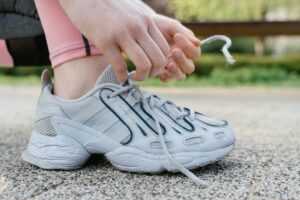
Holistic vs. Wholistic: A Chronic Pain Relief Doctor’s Thoughts
In the world of modern medicine, the terms “holistic” and “wholistic” get thrown around a lot. They’re often used

Walking can be beneficial for people with a herniated disc, especially when done with proper form and moderation. Walking is a low-impact activity that can be done indoors or outdoors. It promotes healing by improving circulation, strengthening core muscles, and enhancing spinal stability. Plus, it releases endorphins, which act as natural pain relievers, and helps give your mental health a nice boost, which never hurts.
A low back or neck herniated or bulging disc is when the middle gelatinous part of the disc projects outward, causing pain.
A bulge is when there is outward (usually posterior) movement without injury to its restraining connective tissue called the annulus. If the disc causes some disruption of the annulus, it is called a herniation. If it projects through the annulus, it is called a protrusion.
The terms, slipped disc, ruptured disc, herniated disc, and bulged/bulging disc are terms commonly used interchangeably, but they refer to slightly different conditions of the intervertebral discs in the spine. Dive even deeper into the differences between spinal disc issues here.
 Always start slow, especially if you feel any sort of pain or pressure in your back or legs. Your herniated disc can cause sharp shooting pain up and down one or both legs. When you’re walking to help with this type of pain, remember you’re not walking to get your heart rate up or win a race. It’s OK to start slow and with shorter walks at first. You can gradually increase your distance as your tolerance grows. Likewise, keep an eye on your posture. This one is tough for a lot of people, especially desk jockeys and women with dense breast tissue. Focus on keeping your head up, shoulders back, and core engaged.
Always start slow, especially if you feel any sort of pain or pressure in your back or legs. Your herniated disc can cause sharp shooting pain up and down one or both legs. When you’re walking to help with this type of pain, remember you’re not walking to get your heart rate up or win a race. It’s OK to start slow and with shorter walks at first. You can gradually increase your distance as your tolerance grows. Likewise, keep an eye on your posture. This one is tough for a lot of people, especially desk jockeys and women with dense breast tissue. Focus on keeping your head up, shoulders back, and core engaged.
A couple of other important tips that you probably already know, but we’d be remiss if we didn’t mention, avoid inclines and declines, as this can be too strenuous on your back and knees. And lastly, always wear supportive shoes. Proper footwear can help in maintaining good posture and will absorb some of the shock, so your spine doesn’t.
Although walking is low-impact, warming up and stretching help reduce muscle stiffness and improve flexibility. Here’s a quick and easy routine that will probably feel good on your back, even if it rains you have to skip your walk (but don’t skip it!):
When you’re finished walking, listen to your body. You know your body better than anyone. Take a few steps to care for it when you’re done and you’ll be thankful later.
Walking can be a great tool for managing a herniated disc, but it’s essential to approach it with care. By focusing on posture, listening to your body, and maintaining a balance between movement and rest, you can support a faster, healthier recovery between your visits with Dr. Zimmerman at LaserTech.
Want to do more than just walking? Check out these other safe ways to stay active with a herniated disc.

In the world of modern medicine, the terms “holistic” and “wholistic” get thrown around a lot. They’re often used

When our patients hear the term herniated disc, or any of its synonyms, bulging disc, ruptured disc, I’m sure

Whether you’re a regular competitor or someone who just loves to hit the pickleball court in the morning before